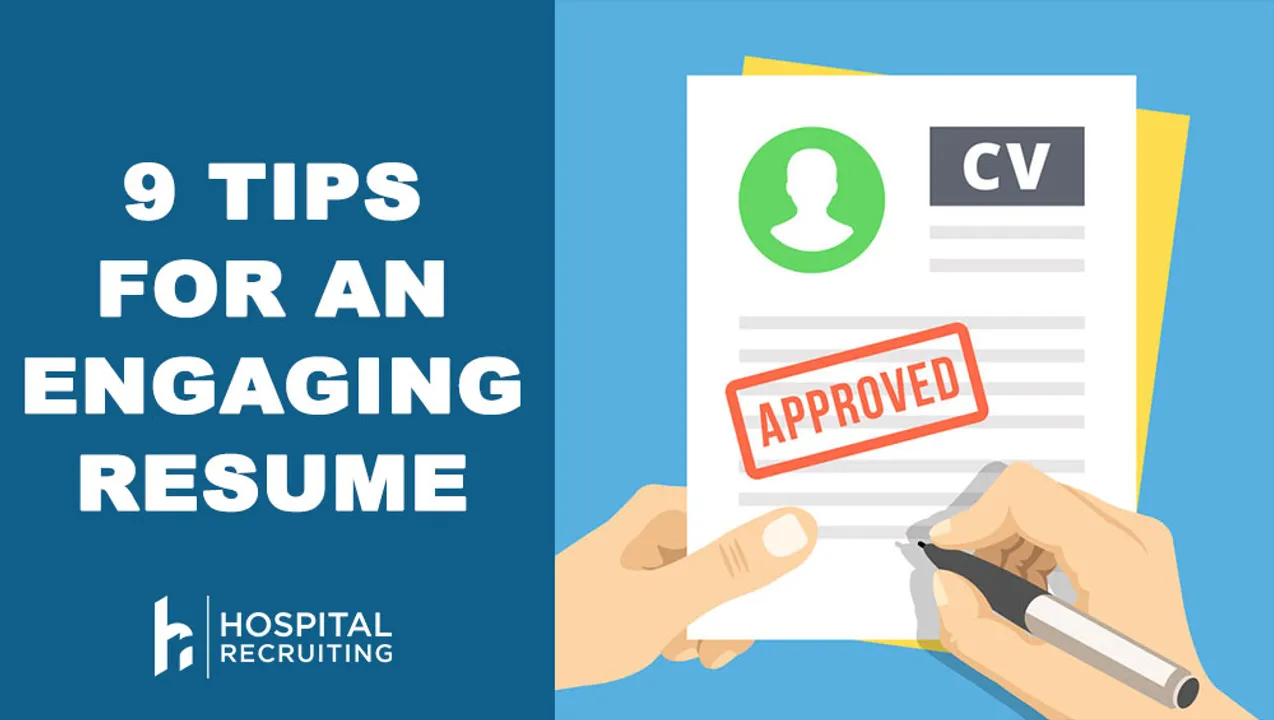9 Tips for Writing an Engaging Resume

Your resumé is the single most important document for getting noticed by a potential employer. Studies show that, on average, most hiring managers only spend about 6-7 seconds reading resumés, which makes creating an engaging resumé absolutely essential. While every job application and hiring manager will be different, there are many tips that you can use to create a resumé that rapidly engages with the reader.
Write for Skimmers
Because hiring managers are likely to spend less than ten seconds reading your resumé, you should keep in mind that you will need to write to catch the attention of someone only skimming your document. Writing full sentences or content that is not easy to skim may allow you to eloquently describe your strengths, but most managers will never end up reading them.
When writing for skimmers, the following techniques can be helpful:
- Use bullet points to quickly emphasize key points.
- Use bolded text to highlight key phrases (this is best used very sparingly).
- Only include important information.
- Format your resumé to be skimmed, not read.
- Keep your resumé to one page.
- Avoid small font (less than 12).
- Keep your content well organized.
By planning ahead of time for your resumé to be skimmed, you can create content that will catch the skimmer’s attention and encourage him/her to engage more deeply with your resumé.
Organize Your Content
The content of your resumé should be easily categorized and placed into sections with headings indicating the content that the section contains. The sections should be arranged based on their strength relative to the position for which you are applying. Information closer to the top will be read first.
If you are listing education or work experience in a chronological order, be sure to use reverse chronological order with your most recent experience at the top. The goal with organizing content in your resumé is for the reader to quickly understand what information each section is presenting and to see your strongest areas first.
Use Quality over Quantity
Because most resumé readers will only skim your resumé, having less content that is higher quality is generally better than having a lot of content. By focusing on quality instead of quantity, your resumé’s reader will be able to digest a larger percentage of your resumé in the short time they spend reading it, and its content will have more of an impact.
Quantify Achievements
Quantifying your achievements is a very important concept that makes your resumé stand out. Consider the difference between “Provided high-quality nursing care in a busy emergency room environment” and “Provided high-quality nursing care in a 23-bed emergency room, caring for an average of 18 patients per shift.” Both examples convey a similar message, but the latter provides the reader with a better idea of exactly what you mean by a “busy emergency room.”
Always try to use hard and fast figures to describe your experience instead of using subjective terms. This not only provides a better description of your achievements, but also allows the reader to visualize your background.
Avoid Employment Gaps
Whether deserved or not, gaps in your employment history will be viewed as a negative by a hiring manager. You should never be deceitful in a resumé, but you should definitely not volunteer the information that there are gaps in your employment history. You can avoid disclosing gaps in your employment history by not using a chronological format or by not listing specific employment dates. Ultimately, you should be prepared to discuss employment gaps during your interview, but a resumé is not a good way to explain them.
Be Professional
One of the most important ideas for your resumé to convey to its reader is that you are a professional person. The best way to do this is to avoid the many common mistakes that resumé writers often make:
- Spelling errors - Spelling mistakes are easy to make and are big red flags. When writing names, especially, spell checks will often fail to catch mistakes. Paying attention to spelling is a must.
- Unprofessional email addresses - It should be unnecessary to say that using your “luverboy69@gmail.com" email address on a resumé is a bad idea, but a surprising number of people include unprofessional email address. Only include a professional email address on your resumé.
- Including a picture - Including a picture on your resumé is considered very unprofessional, and you should never do this. The only exception for this is if you are applying for a position where your personal appearance is relevant to the job, such as an acting or modeling position.
- Inconsistent punctuation - Your punctuation should always be consistent. The biggest area where mistakes are made is inconsistent period use after phrases in bullet points. Always double check your punctuation.
Experts always recommend double and triple checking your resumé for grammar and spelling. You should use spelling and grammar software when possible, and always have a second person double check your resumé.
Avoid Listing Hobbies or Interests
The person reading your resumé is primarily interested in what you can offer for his/her company. Unless your hobbies or interests are highly aligned with the role you are applying to, you should generally avoid listing this, as most readers will see this information as superfluous.
Be Honest
This should go without saying, but your resumé should only be engaging by providing accurate information. Embellishments may be more engaging in the short term but will get you fired when (not if) they are discovered.
Consider the Formatting of your File
In today’s world, you will almost always submit your resumé electronically. If you submit it as a Word document or in a similar format, your file could be very different when it is opened on another computer. Fonts, formatting, and spacing can all change, making your organized resumé a difficult to read mess on the other end.
The best way to avoid this is to always save and submit your resumé as a PDF file. This will ensure that the formatting and style is preserved on the reader’s computer. Also, be sure that you use a professional, easy to reference title for your resumé’s PDF, as this will normally be available to the reader.
Your resumé only has seconds to capture the attention of its reader and engage with that person. By following the best practices for resumé writing, you can ensure that your resumé gives you the best change possible of success.
Related Posts
